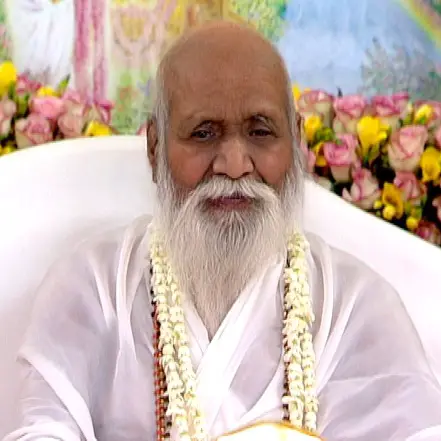Among the myriad of sacred chants, the Tara Mantra stands out as a luminous beacon of compassion, protection, and wisdom.
This article dives into the profound benefits and practices associated with the Tara Mantra, a cornerstone of Buddhist spiritual discipline dedicated to the deity Tara, revered as the Mother of Liberation.
Through exploring its origins, meanings, and the manifold ways it enriches the practitioner’s life, we offer insights into integrating this ancient mantra into daily routines, enhancing not only spiritual awareness but also contributing to emotional and psychological well-being. Whether you’re new to mantra meditation or seeking to deepen your spiritual journey, this guide provides a comprehensive overview of the Tara Mantra, inviting you to experience its transformative power in your life.

Table of Contents
Understanding Tara Mantra
The Tara Mantra, deeply rooted in the rich tapestry of Tibetan Buddhism, serves as a bridge to the divine, embodying the compassionate and protective nature of the goddess Tara. Known as “The Mother of Liberation,” Tara is revered for her swift intervention in the lives of her devotees, offering protection, guidance, and enlightenment.
The mantra associated with Tara, “Om Tare Tuttare Ture Soha,” is not merely a collection of words but a profound vibrational formula that resonates with the core of one’s being, invoking Tara’s boundless compassion and wisdom.
Origin and Meaning
The origins of the Tara Mantra trace back to ancient texts and practices of Tibetan Buddhism, where Tara is considered a bodhisattva of compassion and a powerful deity in her own right. The mantra itself, “Om Tare Tuttare Ture Soha,” holds deep symbolic meaning. Each syllable is a key to spiritual dimensions, offering protection and liberation from suffering. “Om” signifies the universe’s essence, encapsulating the purity of body, speech, and mind. “Tare” indicates Tara’s role as a savior, guiding beings away from the physical and spiritual dangers. “Tuttare” releases fears, while “Ture” liberates from suffering. Finally, “Soha” affirms the invocation of Tara’s qualities and blessings into the practitioner’s life.
Different Forms of Tara
Tara is manifested in twenty-one forms, each representing different qualities and aspects of compassion and protection. These forms are depicted in various colors and postures, with each embodying a unique energy or power to aid in different areas of life. For instance, Green Tara, known for her swift action, is often invoked for immediate help in overcoming fears and obstacles. White Tara, symbolizing purity and health, is called upon for healing and longevity. Each form of Tara, through the mantra, offers a pathway to understanding and accessing the diverse aspects of compassion, protection, and wisdom inherent in the universe.
The Tara Mantra is a powerful tool for spiritual growth, emotional healing, and physical well-being. Its practice is not confined to the followers of Buddhism; it transcends religious boundaries, inviting all who seek refuge and guidance from Tara. Engaging with the mantra, individuals embark on a transformative journey, uncovering layers of their consciousness, and tapping into the profound compassion and wisdom that Tara embodies. Through understanding and regular practice of the Tara Mantra, one can experience the full spectrum of benefits it offers, fostering a deeper connection with the divine and with the innate potential within every being for compassion, strength, and liberation.
Emotional Healing
The practice of chanting the Tara Mantra transcends mere spiritual discipline, venturing into the realm of profound emotional healing. In today’s fast-paced world, where stress, anxiety, and emotional turmoil often take center stage, the Tara Mantra emerges as a beacon of light, offering solace and inner peace to those engulfed in the darkness of emotional distress.
Soothing the Emotional Self
At its core, the Tara Mantra acts as a soothing balm for the weary soul, gently nurturing the emotional self back to a state of balance and harmony. The rhythmic repetition of the mantra helps to calm the mind, easing the relentless churn of anxious thoughts and worries. This calming effect is not superficial but reaches deep within, touching the very roots of emotional pain and discomfort, allowing for a process of healing to begin.
Cultivating Compassion and Understanding
Chanting the Tara Mantra opens the heart to the qualities of compassion and empathy, not only for others but also for oneself. In the light of Tara’s compassionate energy, individuals are encouraged to view their struggles and pain with kindness and understanding, fostering a gentle acceptance of their emotional experiences. This shift in perspective is crucial for healing, as it moves one away from self-criticism and towards a more loving and forgiving approach to personal challenges.
Emotional Resilience and Strength
Regular engagement with the Tara Mantra builds emotional resilience, equipping individuals with the strength to face life’s ups and downs with a calm and steady heart. The mantra instills a sense of inner peace and stability, anchoring the emotional self in times of turmoil. This resilience does not imply a denial of pain or suffering but signifies a profound ability to navigate through emotional waters without being overwhelmed, maintaining a sense of clarity and purpose amidst the chaos.
Release and Transformation
The Tara Mantra facilitates a process of emotional release, enabling individuals to let go of past hurts, grievances, and negative emotions that have long been held captive in the heart. As these layers of emotional baggage are gently peeled away, space is created for new growth and transformation. This release is not a one-time event but a continuous journey of shedding the old to make way for the new, supported by the compassionate energy of Tara.
A Path to Inner Peace
Ultimately, the emotional healing brought about by the Tara Mantra leads to a state of deep inner peace. This peace is not dependent on external circumstances but flows from an unshakeable connection to one’s inner self and the compassionate embrace of Tara. It is a peace that permeates every aspect of being, radiating outwards and touching the lives of those around, creating a cycle of healing and love that transcends individual experience.
In essence, the Tara Mantra is a powerful tool for emotional healing, offering a path to inner peace and emotional well-being that is accessible to all. Through its practice, individuals are invited to embark on a journey of emotional transformation, guided by the compassionate and loving energy of Tara, towards a life marked by balance, resilience, and profound peace.
Spiritual Enlightenment
The Tara Mantra, revered for its profound spiritual significance, serves as a key to unlocking the doors of spiritual enlightenment for practitioners around the globe. This ancient mantra, deeply rooted in Buddhist tradition, is not merely a set of words but a spiritual formula that, when chanted with devotion and understanding, can illuminate the path to a deeper understanding of the self and the universe.
Awakening to Higher Consciousness
At the heart of the Tara Mantra’s power is its capacity to awaken the practitioner to higher states of consciousness. The repetitive and meditative chanting of “Om Tare Tuttare Ture Soha” facilitates a transcendence from the mundane to the spiritual, guiding the mind away from superficial concerns and towards the exploration of inner realms. This journey towards enlightenment is marked by an increasing awareness of the interconnectedness of all life and a profound understanding of the transient nature of the physical world.
Dissolving Ego and Illusion
One of the pivotal benefits of the Tara Mantra in the pursuit of spiritual enlightenment is its ability to dissolve the ego and the illusions that bind us to suffering. The mantra encourages the letting go of attachment to the self and material possessions, facilitating a release from the cycle of desire and aversion that characterizes human existence. In the space created by this release, practitioners find the freedom to explore the true essence of being, unencumbered by the constructs of the ego.
Cultivating Compassion and Wisdom
The essence of Tara, embodied in the mantra, is compassion and wisdom. Regular chanting cultivates these qualities within the practitioner, leading to a transformation that is both inward and outward. Compassion extends not only to oneself but to all beings, fostering a sense of kinship and a desire to alleviate suffering in the world. Wisdom arises from a deep insight into the nature of reality, illuminated by the light of enlightened understanding. Together, these qualities guide the practitioner on a path of selfless action and spiritual growth.
Connecting with the Divine
The Tara Mantra opens a channel for direct communication with the divine, allowing practitioners to experience the presence of Tara in their lives. This connection is deeply personal and transformative, offering guidance, protection, and the strength to overcome obstacles on the spiritual path. The sense of being supported by a compassionate deity encourages perseverance in practice and a deepening of faith and devotion.
A Path to Inner Peace and Liberation
Ultimately, the practice of the Tara Mantra leads to a state of inner peace and liberation from the cycles of birth and death. The mantra’s vibrations work to purify the mind and body, clearing the way for enlightenment to dawn. As practitioners advance on their spiritual journey, they experience a growing sense of serenity and a detachment from the vicissitudes of life, anchored in the unshakeable ground of spiritual truth.
In summary, the Tara Mantra is a powerful tool for those seeking spiritual enlightenment. Its benefits extend beyond the realm of the personal, offering a pathway to universal understanding, compassion, and the ultimate liberation of the soul. Through dedicated practice, the mantra reveals the luminous nature of reality, guiding practitioners to the realization of their highest spiritual potential.
Psychological Benefits
The Tara Mantra, with its deep spiritual roots and profound vibrational impact, extends its benefits into the realm of psychological well-being, providing a potent tool for mental health and cognitive enhancement. In an era where psychological stressors are rampant, the practice of this ancient mantra offers a sanctuary for the mind, fostering resilience, clarity, and a profound sense of well-being.
Enhancing Mental Clarity and Focus
Regular chanting of the Tara Mantra has a remarkable effect on the mind’s ability to concentrate and remain focused. The mantra’s rhythmic repetition helps to center the mind, drawing it away from distracting thoughts and towards a single point of focus. This heightened state of concentration is invaluable not only for meditation but also for enhancing productivity and efficiency in daily tasks, promoting a mindful approach to work and personal projects.
Alleviating Stress and Anxiety
The modern world is fraught with stress and anxiety, often leading to a multitude of psychological problems. The Tara Mantra serves as a natural antidote to these issues, offering a way to calm the mind and soothe the nervous system. The act of chanting creates a meditative state where stressors recede into the background, providing a break from the constant stimulation of the external world. This practice can significantly reduce levels of anxiety and stress, promoting a more balanced and peaceful state of mind.
Promoting Emotional Stability
The emotional healing benefits of the Tara Mantra naturally extend into the psychological realm, enhancing emotional stability. By fostering a sense of inner peace and calm, the mantra helps practitioners navigate emotional upheavals with greater ease. The stability gained through regular chanting allows for a more measured response to life’s challenges, reducing the likelihood of extreme emotional reactions and fostering a state of equanimity.
Boosting Self-esteem and Confidence
Engaging with the Tara Mantra can also have a positive impact on self-esteem and confidence. The practice encourages a deeper connection with the self and the divine, fostering a sense of inner strength and resilience. This connection can empower individuals, boosting their confidence in their abilities and their worth. As practitioners develop a more compassionate relationship with themselves through the mantra, this naturally translates into improved self-esteem.
Cultivating Mindfulness and Present Moment Awareness
The practice of chanting the Tara Mantra is inherently mindful, requiring practitioners to focus on the present moment and the repetition of the mantra. This cultivation of present-moment awareness is a cornerstone of psychological well-being, helping individuals to step away from ruminations about the past or worries about the future. Mindfulness, developed through mantra practice, enhances the ability to live fully in the present, appreciating the richness of life with all its nuances.
Supporting Cognitive Health
Beyond its immediate psychological benefits, the Tara Mantra may also support long-term cognitive health. The mental discipline required for regular chanting and the enhanced focus and mindfulness fostered by the practice can contribute to a healthier brain. These cognitive benefits not only improve quality of life but may also protect against cognitive decline, making the Tara Mantra a valuable practice for mental health and well-being at any age.
In conclusion, the Tara Mantra offers a wealth of psychological benefits, from improving focus and reducing stress to enhancing emotional stability and self-esteem. Its practice is a powerful testament to the mind’s ability to find peace and resilience through spiritual engagement, making it a valuable tool for anyone seeking to enhance their mental and psychological well-being.
Enhanced Concentration and Focus
In the fast-paced, distraction-filled world we navigate daily, maintaining concentration and focus becomes increasingly challenging. The Tara Mantra, a cornerstone of spiritual practice, offers profound benefits beyond the realms of spiritual enlightenment and emotional healing, extending into the enhancement of cognitive faculties such as concentration and focus.
Cultivating a Centered Mind
The repetitive nature of chanting the Tara Mantra serves as a powerful tool for centering the mind. As practitioners vocalize or mentally recite the mantra, their attention converges on the sound and meaning of the words, pushing aside extraneous thoughts and distractions. This process of focused repetition helps to train the mind to remain on a single point of focus, enhancing the ability to concentrate not only during meditation but in everyday tasks as well.
Reducing Mental Clutter
One of the key obstacles to concentration and focus is the incessant mental clutter that occupies our minds. The Tara Mantra works by creating a meditative space where the mind can quieten and release the buildup of thoughts, worries, and mental noise. By engaging in this practice regularly, individuals can significantly reduce mental clutter, paving the way for clearer thinking and improved focus.
Strengthening Cognitive Control
Regular chanting of the Tara Mantra strengthens cognitive control, the mental process involved in directing attention and suppressing impulses that interfere with focus. Through the disciplined practice of mantra recitation, practitioners develop the ability to command their attention at will, choosing where to focus their mental resources. This enhanced cognitive control is invaluable in both personal and professional settings, where sustained attention and focus are essential for success.
Boosting Memory and Recall
The practice of mantra chanting also has positive implications for memory and recall. The act of memorizing the mantra and recalling it during practice stimulates cognitive functions related to memory. Moreover, the increased concentration and mental clarity resulting from regular chanting contribute to better information retention and recall, aiding in learning and cognitive performance.
Promoting Mindfulness and Awareness
The Tara Mantra encourages a state of mindfulness, where practitioners become more aware of the present moment. This awareness enhances concentration by anchoring the mind in the now, making it less susceptible to distractions. Mindfulness, cultivated through mantra practice, improves the ability to focus on tasks at hand with full attention, leading to higher productivity and efficiency.
Facilitating Deeper Meditation
For those engaged in meditation practices, the Tara Mantra significantly enhances the depth and quality of meditative states. Concentration and focus are crucial for deep meditation, and the mantra provides a focal point for the mind, enabling practitioners to achieve deeper states of meditation more readily. This not only improves spiritual practice but also contributes to the overall well-being by fostering a calm, focused, and balanced mind.
In conclusion, the Tara Mantra offers significant benefits for enhancing concentration and focus. By reducing mental clutter, strengthening cognitive control, boosting memory, promoting mindfulness, and facilitating deeper meditation, the mantra serves as a valuable tool for anyone looking to improve their cognitive faculties and achieve a higher level of mental performance. Whether for spiritual, personal, or professional growth, the practice of the Tara Mantra is a potent means to sharpen the mind and enhance the quality of attention and presence in all areas of life.
How to Practice Tara Mantra
Practicing the Tara Mantra is a journey into the heart of spiritual devotion, offering pathways to healing, enlightenment, and inner peace. This sacred chant, deeply rooted in Buddhist tradition, is a powerful tool for transformation when approached with respect and intention. Here’s a guide to help you incorporate the Tara Mantra into your spiritual practice effectively.
Preparing for Recitation
- Find a Quiet Space: Choose a quiet, serene environment where you can practice without interruptions. A dedicated space for meditation and spiritual practices can help create a conducive atmosphere for your practice.
- Set a Regular Time: Establishing a routine by practicing at the same time each day can enhance the efficacy of your mantra recitation. Early morning or evening are considered auspicious times, but choose what suits your schedule best.
- Sit Comfortably: Adopt a comfortable seated position, keeping your back straight to allow for free flow of energy. You can sit on a cushion or chair, ensuring your comfort throughout the practice.
- Set an Intention: Before beginning, take a moment to set an intention for your practice. This could be a wish for healing, peace, or enlightenment for yourself or others. Connecting with the mantra’s purpose amplifies its benefits.
The Correct Pronunciation
- Learn the Mantra: The Tara Mantra is “Om Tare Tuttare Ture Soha.” Familiarize yourself with the pronunciation of each syllable. You may seek guidance from a teacher or reliable online resources to ensure accuracy.
- Understand the Meaning: Knowing the meaning behind the mantra can deepen your connection to the practice. Each syllable has a profound significance, invoking different qualities of Tara.
Chanting the Mantra
- Begin with Breaths: Start by taking a few deep breaths, centering yourself in the present moment. Allow your body to relax and your mind to calm.
- Recite with Focus: Begin chanting the mantra aloud or silently. Keep your attention on the sound and feel of the words, allowing them to resonate within you. Visualize the compassionate energy of Tara enveloping you as you chant.
- Use Mala Beads: If you have mala beads, use them to count your recitations. Traditionally, a full cycle of 108 recitations is completed, but you can start with a smaller number and gradually increase.
- Maintain a Steady Pace: Chant the mantra at a steady, comfortable pace. The rhythm can be slow and meditative or slightly faster, depending on what feels right for you.
- Close with Gratitude: Once you have completed your recitations, take a moment to sit in silence, absorbing the vibrations of the mantra. Close your practice with a gesture of gratitude, acknowledging the blessings and guidance of Tara.
Integrating Mantra Practice into Daily Life
- Daily Practice: Aim to incorporate the Tara Mantra into your daily routine. Consistency is key to deepening the impact of the practice on your spiritual and emotional well-being.
- Use in Times of Need: Beyond regular practice, you can chant the Tara Mantra in moments of stress, fear, or when seeking guidance. It serves as a source of strength and protection.
- Share the Practice: Sharing the practice with others can amplify its benefits. Consider joining a group or community that practices mantra chanting.
Practicing the Tara Mantra is a sacred journey that nurtures the soul, heals the heart, and enlightens the mind. By approaching the mantra with respect, intention, and regular practice, you can unlock its profound benefits, fostering a deeper connection with the divine and transforming your spiritual path.
Tara Mantra in Daily Life
Incorporating the Tara Mantra into daily life is a transformative practice that extends the profound benefits of this sacred chant beyond the meditation cushion, infusing your everyday activities with mindfulness, compassion, and spiritual awareness. Here’s how you can weave the essence of the Tara Mantra into the fabric of your daily life, creating a living tapestry of spiritual practice.
Starting Your Day with Intention
Begin each day by chanting the Tara Mantra as part of your morning routine. This sets a positive tone for the day ahead, aligning your thoughts, actions, and interactions with the qualities of compassion and mindfulness. It can be a grounding practice that centers you, preparing you to face the day’s challenges with equanimity and grace.
Mindfulness in Daily Activities
Transform mundane tasks into mindfulness practices by integrating the Tara Mantra. Whether you’re commuting, doing household chores, or even working, silently reciting the mantra can help maintain a state of presence and awareness. This practice turns everyday actions into opportunities for spiritual growth, keeping you connected to the mantra’s energy throughout the day.
Cultivating Compassion and Patience
The essence of the Tara Mantra is compassion. Remind yourself of this quality in interactions with others, especially in challenging situations. When faced with conflict or negativity, silently chant the mantra to invoke Tara’s compassion and wisdom, helping you respond with understanding and patience rather than reacting impulsively.
Healing and Stress Relief
In moments of stress, anxiety, or emotional distress, turn to the Tara Mantra for comfort and healing. The soothing vibrations of the chant can help calm your mind, ease your heart, and provide a sense of peace and protection. This practice can be particularly beneficial in navigating the ups and downs of life with a more resilient and open heart.
Enhancing Your Meditation Practice
Incorporate the Tara Mantra into your meditation practice, using it as a focal point to deepen your concentration and enhance the quality of your meditation. The mantra can help you enter a state of deep peace and presence, facilitating a more profound connection with the divine and your inner self.
Sharing the Practice
Share the beauty of the Tara Mantra with family and friends, inviting them to join you in chanting or introducing them to the practice. This not only amplifies the mantra’s benefits but also creates a shared space of spiritual connection and support, enriching your relationships and community.
Reflection and Journaling
Reflect on your experiences with the Tara Mantra in a journal. Note any changes in your emotional state, challenges you’ve overcome, or insights you’ve gained through the practice. This reflection can deepen your understanding and appreciation of the mantra’s impact on your life.
Bedtime Recitation for Peaceful Sleep
End your day by chanting the Tara Mantra before sleep. This can be a soothing ritual that helps you release the day’s stresses and enter a state of calm, ensuring a restful night’s sleep filled with positive, healing energy.
Integrating the Tara Mantra into daily life is a journey of continuous discovery and transformation. By weaving the mantra into the fabric of your everyday existence, you cultivate a living, breathing practice of mindfulness, compassion, and spiritual growth. The Tara Mantra becomes not just a chant but a way of life, guiding you toward a more peaceful, compassionate, and enlightened existence.
FAQs About Tara Mantra Practice
What is the Tara Mantra?
The Tara Mantra, “Om Tare Tuttare Ture Soha,” is a powerful Buddhist chant dedicated to the deity Tara, known as the Mother of Liberation. She represents compassion, protection, and healing, and chanting her mantra is believed to bring about these qualities in one’s life.
See Related Posts

Mantras to Live By

Best Mantras for Exams

Transcendental Meditation Mantras

Mental Wellness Mantras

Tara Mantra Benefits

Numerology and Mantras

Best Morning Mantras

Love Mantras

TV Sitcom Mantras

